WordPress Plugin
With LambdaTest plugin for WordPress, you can generate automated screenshots of your web pages and post directly from your WordPress platform.
How To Install & Use LambdaTest WordPress Plugin?
Step 1: Login to your WordPress account.
Step 2: Goto plugins and click on Add New plugin button.
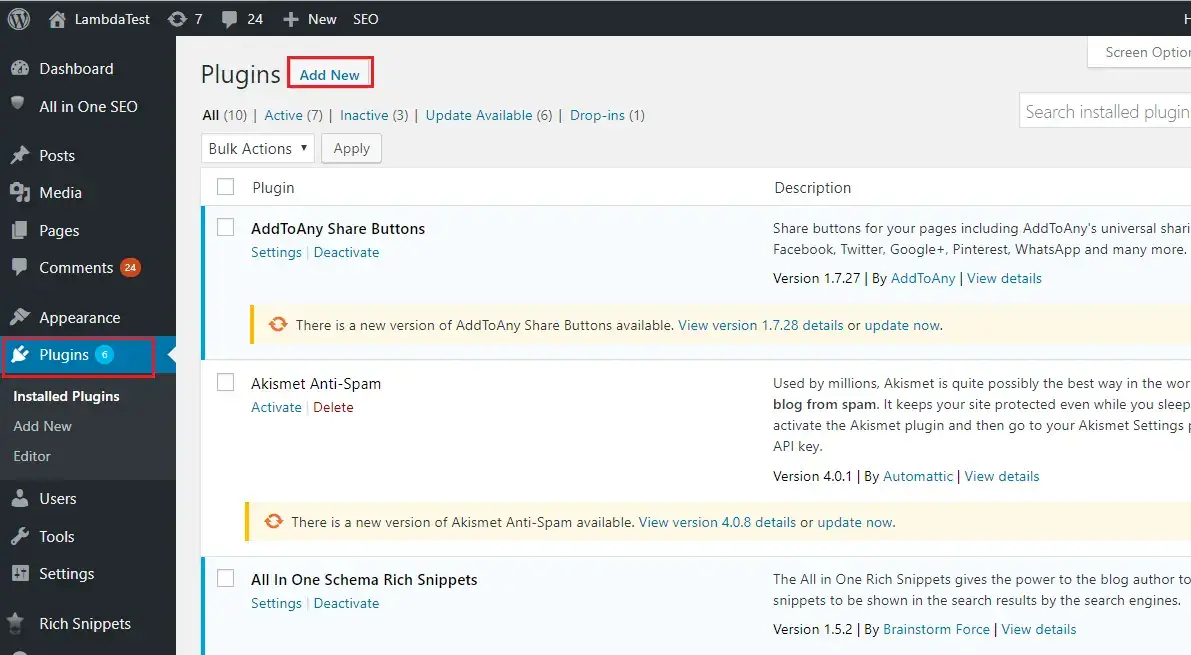
Step 3: Search for LambdaTest keyword in search bar and click on install button.
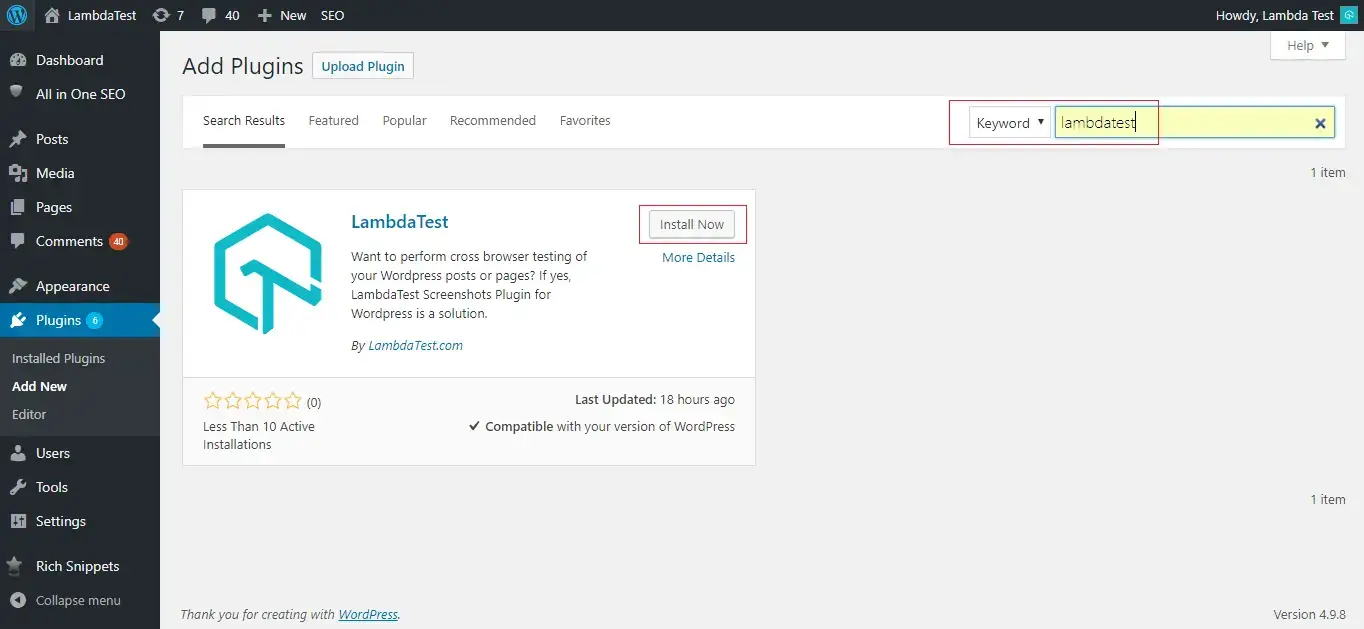
Step 4: Click on Activate button and you are all set with LambdaTest plugin.
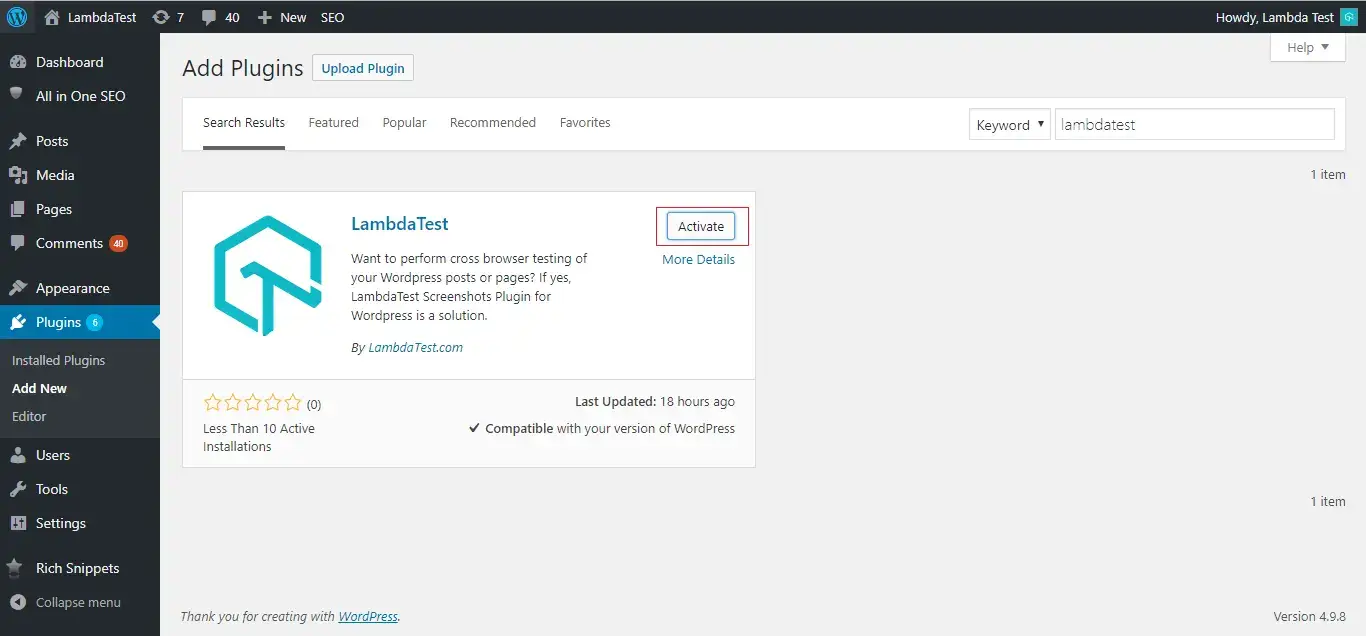
Step 5: Now you can see LambdaTest Screenshot in plugin option on your WordPress platform.

Step 6: Now go to LambdaTest plugin and add LambdaTest profile account details.

Step 7: Go to profile section on your LambdaTest account and copy access key.
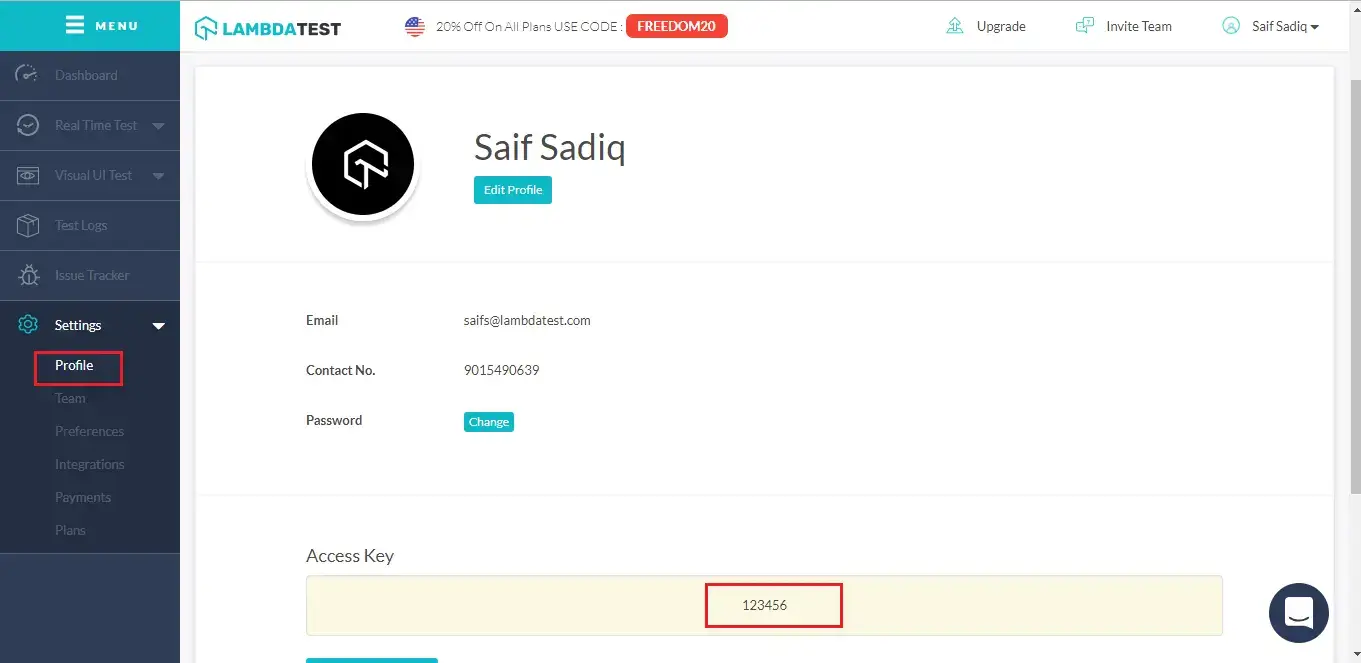
Step 8: Add Email address and paste Access key in your WordPress platform. Click on Activate button.

Step 9: You are all set with WordPress plugin.

Step 10: Now you can Generate Automated Screenshots of your web pages or posts with LambdaTest plugin. Go to All Posts and you will LambdaTest icon below every post. Click on that icon.

Step 11: Now select the browser, browser version and mobile devices where you want to take screenshots and hit Start button.
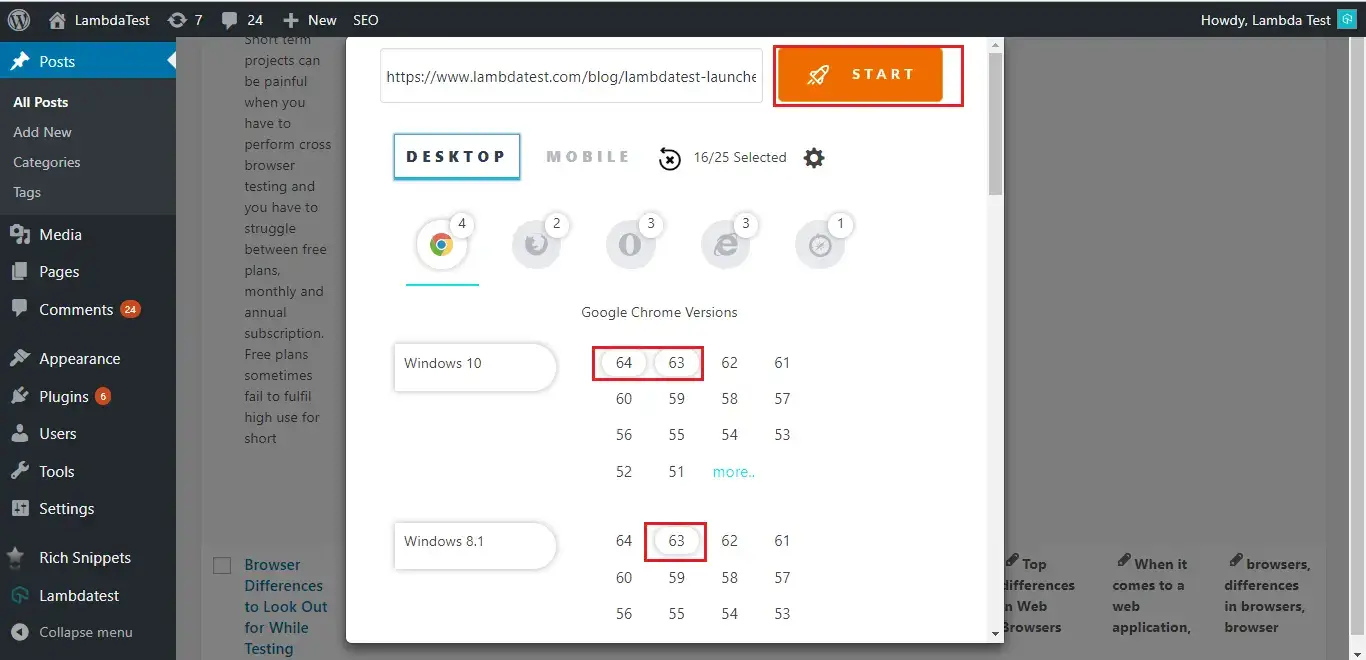
Step 12: Here all the screenshots are generated.

